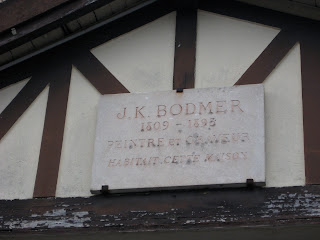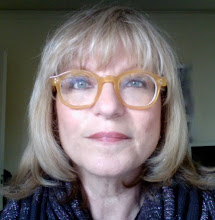In a last ditch effort to see something of the rest of France before leaving for the summer (which seems very far off still, I must admit) we trained to St. Malo in Brittany for the weekend. St. Malo is a pirate port, reknowned for the privateers it sent out to hunt British shipping in the long years of war between the two. It's also the port from which Jacques Cartier set out to found Quebec. If you've ever visited Quebec you'll note that he did a good job of replicating St. Malo when he got there. Gray stone was plentiful in both places apparently.
A major fire during World War II destroyed most of the original old town, but it has been more or less reconstructed and one might be almost fooled into thinking it real were it not for the suspicious cleanliness and height of the buildings. There is a small area that remains original between the Cathedral and the ramparts. These slate roofs seem to have survived the conflagration.
The next morning was a bit more temperate and we went back up to finish the walk, running across residents, known as Malouinois, doing their morning shopping.
Later that morning we drove to Dinan, about 30 minutes away and found, not a replica, but a town whose center remains nearly perfectly medieval, with half-timbered houses leaning up against each other and a few old stone mansions to lend spice to the mix.
The old buildings are still lived in and in fact we saw a few "for sale" or "for rent" signs. Hard for us to believe that you can just move your Ikea furniture into the 15th century like that, but apparently it's true. We met a sweet elderly man who lives in one of the restored mansions and who told us the story of the family who used to own it.
Apparently the medieval patriarch of the family kept marrying widows who "had the good taste to die quickly," until after the last one died, at which point he became religious and turned much of the house into a residence for the nuns who worked at the hospital for pilgrims down the road. Having turned its attention from rich widows to poor nuns, the family's fortunes declined until the municipality turned it into middle-income housing to rescue it from destruction just a few years ago.
When we realized Mont St-Michel was only an hour's drive away we hopped back in the car and headed off, arriving in plenty of time to climb the innumerable steps up to and within the enormous church built over the centuries, from the 11th to the 20th. That spire on top was not installed until much more recently than one would think.
It's a windy, gray and rather grim place and I wasn't surprised to learn that for much of its history after the French Revolution it served as a prison. The stone halls are entirely undecorated and the only fireplaces are in the hall in which the monks worked and in the guest hall. Brrr...
The sands surrounding the abbey are treacherous and are quickly covered by the incoming tide, but the abbey is rarely entirely surrounded. As we drove up the causeway we saw some of the famous lambs grazing on the salty greens that would make the meat sell later at high prices as "pre salé". As for us, we dined on the specialities of the area, oysters, fish, crêpes, kouign amann, and caramel au beurre salé. The monks and prisoners never had it so good. The pirates, I'm quite sure, dined at least as well as we.















































